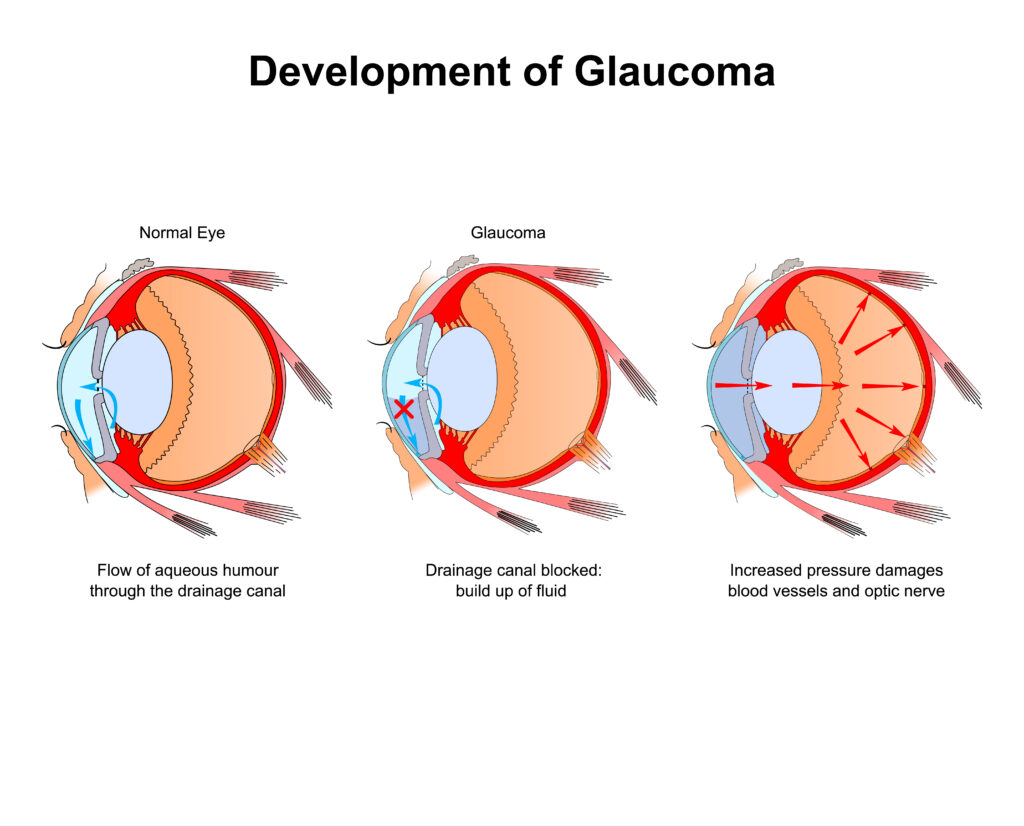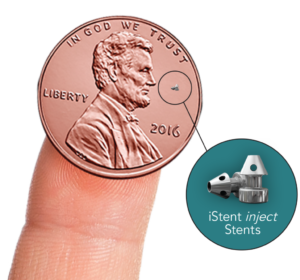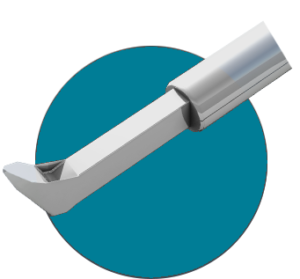Can You Treat Glaucoma and Cataracts at the Same Time?
Do you have glaucoma but also need to have your cataracts removed? You may be wondering if you are able to treat cataracts and glaucoma at the same time.
The good news is that thanks to minimally-invasive glaucoma surgery (MIGS), this is possible. MIGS procedures can be combined with cataract surgery for patients with cataracts and mild to moderate open-angle glaucoma.
MIGS techniques, as the name suggests, are less invasive. They also use the same incision your surgeon creates when they remove your cataracts.
It’s possible to have both cataracts and glaucoma even though they are two different conditions. Keep reading to learn more about how to treat glaucoma and cataracts with MIGS procedures.
Cataracts

Cataracts are an almost inevitable part of aging that occurs when the natural lens of the eye becomes cloudy. With cataracts, it’s quite common to experience blurry or hazy vision. Other symptoms of cataracts that you may experience are:
- Double vision
- Difficulty when driving at night
- Halo and glares
- Increased sensitivity to light
You may not realize you have cataracts at first, as it can take many years for a cataract to develop. Once you find out you have cataracts, you may not need cataract surgery until they make it difficult to complete everyday activities.
Glaucoma
Glaucoma is a group of eye diseases that cause irreversible damage to the optic nerve usually due to high intraocular pressure. There are different types of glaucoma, but the most common is open-angle glaucoma.

Symptoms of open-angle glaucoma include blind spots and tunnel vision, although most people with glaucoma don’t realize they have it until the later stages of the disease when they’ve already developed vision loss. Although anyone can have glaucoma, some factors increase your risk of developing the condition, including:
- Being 60 years or older
- Having a family history of glaucoma
- Diabetes
- Severe eye trauma
- Extreme nearsightedness
- Hispanic, African American, or Asian heritage
- Long-term use of corticosteroid medications
The best line of defense against glaucoma is to schedule regular eye exams with your eye doctor. Though there is no cure for the condition, early diagnosis and treatment help manage it and preserve your remaining vision.
Is it Safe to Combine Cataract and Glaucoma Procedures?
If glaucoma and cataracts are left untreated, they can cause vision loss. Having cataract surgery is the only way to treat cataracts and regain your clear vision. For some patients, undergoing a surgical procedure to treat their glaucoma is necessary.
It’s important to note that some patients with glaucoma and cataracts may not qualify for a procedure that combines them. The decision to perform both procedures simultaneously will depend on how mature your cataracts are, your type of glaucoma, and its severity, among other factors.
At Desert Vision Center, Dr. Tokuhara will consider all the necessary factors before recommending the best treatment like MIGS to protect your vision and sight. Depending on your eye condition, Dr. Tokuhara may recommend MIGS as a stand-alone procedure as well.
Minimally-Invasive Glaucoma Surgery
Most of the MIGS procedures performed will leave the tissues of the eye typically used during traditional glaucoma surgeries intact. Doing this ensures the possibility of being able to undergo future treatment options.
Compared to traditional glaucoma procedures like a trabeculectomy, MIGS is both easier and quicker to perform. It also has fewer risks of complications occurring.
What to Expect During MIGS
Although it can differ depending on the MIGS procedure, these procedures usually take about 15 to 20 minutes for each eye. The first step in a combined procedure is to remove the natural lens where the cataract has formed.
After removing the clouded lens where the cataract is, and replacing it with an artificial lens, known as an intraocular lens (IOL), the MIGS portion of the procedure begins. Micro-invasive glaucoma surgery adds no significant risk to the cataract procedure.
Treating Cataracts and Glaucoma at the Same Time
Various minimally invasive glaucoma surgery procedures make it possible to treat glaucoma while you’re having your cataracts removed during cataract surgery. At Desert Vision Center, we offer the following MIGS procedures:
iStent Inject

The iStent inject is an effective option for glaucoma patients who also need to have cataract surgery. It helps manage increased intraocular pressure due to glaucoma, reducing dependence on glaucoma medications.
The iStent inject stent also improves the outflow of fluid from the eye. The iStent comprises two tiny shunts used to create double and separate pathways in your trabecular meshwork.
As a result, your eye can drain the aqueous adequately, decreasing the pressure inside the eye. This FDA-approved device has proven to be safe and highly successful.
Hydrus Microstent
The Hydrus microstent is a minimally invasive stent that is only about the size of an eyelash. The microstent is placed into Schlemm’s Canal, providing a direct flow of aqueous pressure in the eye.
The microstent has three windows which create a 90-degree scaffold. The scaffold helps keep Schlemm’s Canal open and expands the eye’s pathway for keeping fluids moving through it.
Implantation of the Hydrus Microstent helps lower intraocular pressure. This procedure can be combined with cataract surgery for patients with both glaucoma and cataracts.
For some people, the stent decreases reliance on eye drops that lower intraocular pressure. Some patients may no longer need glaucoma medication to lower their pressure after having the Hydrus Microstent implanted.
OMNI Canaloplasty
The OMNI canaloplasty is an implant-free MIGS procedure. It uses a microcatheter that moves through Schlemm’s Canal, opening and breaking adhesions 180 to 360 degrees.
Once the microcatheter is retracted, viscoelastic is deployed into the canal. This opens the outflow pathway in the eye and helps to reduce pressure.
Although an OMNI canaloplasty doesn’t cure glaucoma, it does slow its progression. Since it’s a minimally invasive procedure, there’s less risk for scarring, as well as less risk of complications.
Kahook Dual Blade (KDB)

The Kahook Dual Blade allows your surgeon to create a small incision in the trabecular meshwork as well as the wall of Schlemm’s Canal. Doing this releases intraocular pressure and enhances fluid outflow.
The Kahook Dual Blade is a good option for patients with open-angle glaucoma. The procedure uses a disposable blade and can be performed with cataract surgery without affecting recovery, thanks to its low risk of infections or leaks.
In 2018, Dr. Tokuhara became the first surgeon in Coachella Valley to successfully perform the Kahook Dual Blade Goniotomy.
Specialized Treatment for Patients with Glaucoma and Cataracts
If you have both glaucoma and cataracts, Dr. Tokuhara can help. Desert Vision Center’s board-certified cataract surgeon and fellowship-trained retina specialist use MIGS to deliver the most advanced and effective treatment for patients with glaucoma and cataracts.
Do you have cataracts and glaucoma? Find out if a MIGS procedure may be right for you by scheduling a consultation at Desert Vision Center in Rancho Mirage, CA, now.

